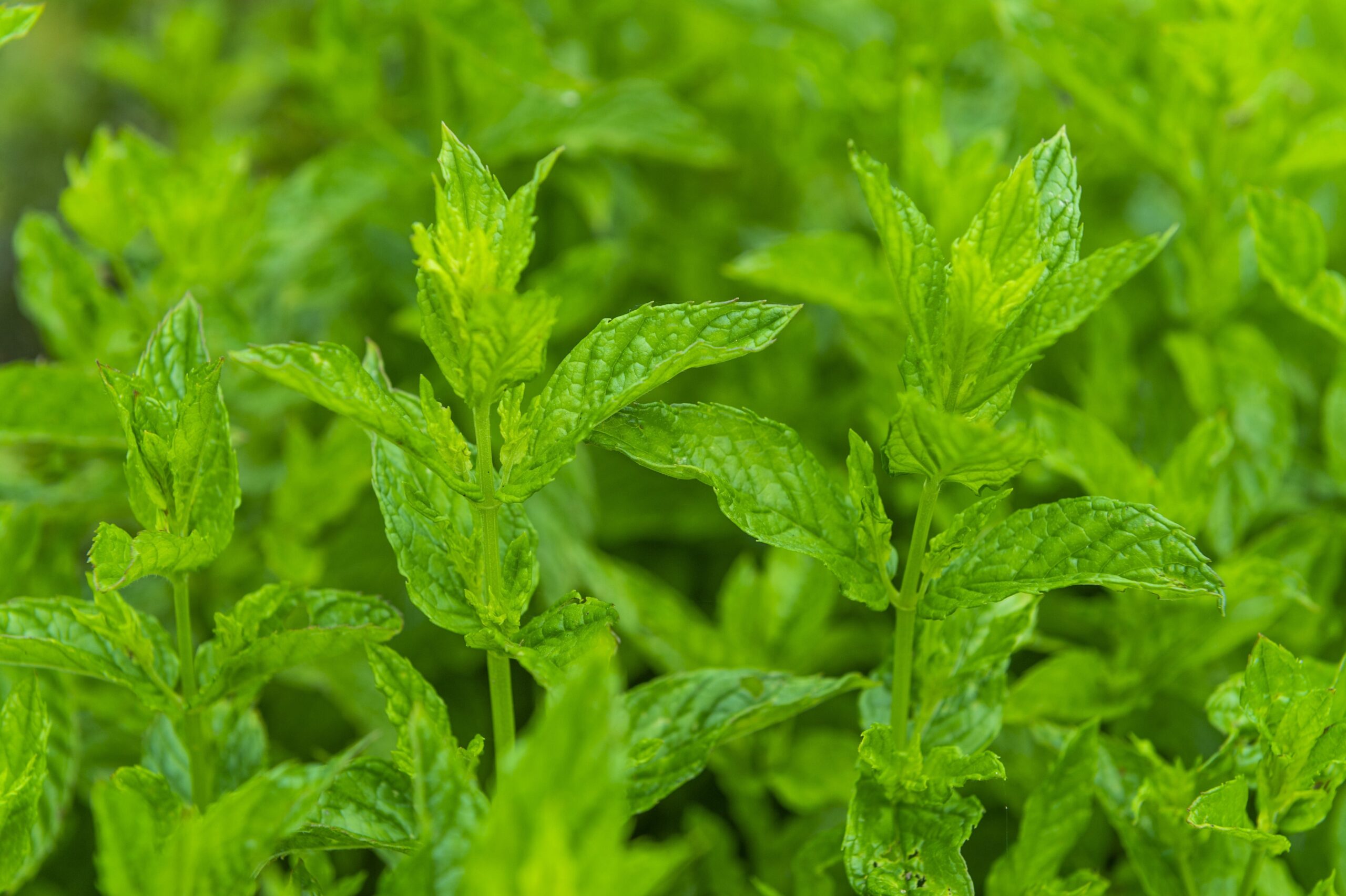Mint is the ultimate beginner’s herb: Resilient, fragrant, and difficult to kill. It grows fast, smells incredible, and transforms everything from tea to dinner recipes with minimal effort on your part. Whether you’re new to gardening or looking for a reliable herb that actually thrives on neglect, mint delivers. It spreads enthusiastically, rewards casual care with abundant harvests, and turns any windowsill or garden bed into an aromatic haven. Below is your complete guide to caring for mint like a pro.
Types of Mint
Spearmint is the classic, mild variety perfect for everything from tea to tabbouleh.
Peppermint brings intensity with its high menthol content. This is your go-to for strong mint flavor, like candy canes and digestive teas.
Chocolate Mint delivers genuine chocolate undertones and makes great dessert garnishes.
Apple Mint offers fruity sweetness with fuzzy, rounded leaves that feel like velvet. It is gentler than its cousins and great on with fruit salads.
Lemon Mint combines citrus brightness with classic mint cooling, and tastes great in water.
Mojito Mint has leaves that muddle and release maximum flavor—it’s specifically bred for cocktails.
How to Plant Mint
Location
Mint thrives in partial shade to full sun, but prefers morning sun with afternoon shade, especially in hotter climates.
Soil Preparation
Mint isn’t picky. It will grow in almost any soil type as long as it drains well. Aim for a pH between 6.0 and 7.0, though it’s alright if you’re slightly off. Mix in some compost or well-rotted manure to give your plants a head start.
Planting From Seed
Planting from seed requires patience (mint seeds are notoriously slow to germinate), but transplants are your fast track to success. Plant them 18-24 inches apart—trust us on this spacing, mint has zero concept of personal boundaries and will spread very fast.
Container Planting
Container planting is a smart move. Mint’s aggressive spreading habit can be difficult to get a hold on. Plant it in a pot that’s at least 12 inches wide and deep with drainage holes.
How to Grow Mint Indoors
Light Requirements
Choose a south-facing window for maximum light, or supplement with a grow light if needed. Like outdoor mint, indoor mint needs four to six hours of daily sunlight and performs best with morning sun rather than harsh afternoon rays.
Container Selection
Use a 12-inch wide container to give the plant room to grow. Choose something with good drainage (mint sitting in soggy soil is mint heading for an early grave). A six to eight inch pot works for smaller varieties, but give larger types more room to spread their roots.
Temperature
Mint handles indoor temperatures between 65-75 degrees Fahrenheit well. Keep it away from heating vents and drafty windows.
Mint Plant Care
Watering
Keep soil consistently moist but not soggy. Stick your finger into the soil, and if the top inch is dry, it’s time to water. Aim to water in the morning so plants stay hydrated as temperature levels rise throughout the day. Wilting leaves signal your mint needs water, while darker leaves indicate overwatering.
Fertilizing
Feed mint plants about once per month during the growing season if you have nutrient-poor soil. Container-grown plants benefit from a balanced, all-purpose fertilizer throughout the growing season. Skip heavy feeding in winter when growth slows.
Pruning
Pinch off flower buds as soon as they appear to keep leaves tender and flavorful. Regular harvesting encourages bushier growth, so don’t be shy about snipping. Cut the whole plant down to two inches from the base after flowering in late summer.
Pest Management
Mint’s strong scent naturally repels most pests. You may occasionally spot aphids or spider mites, but a strong spray of water usually sends them packing, or try insecticidal soap for persistent problems.
Harvesting Mint
Timing
Harvest in the morning after dew has dried but before the day heats up. The oils are most concentrated then, giving you maximum flavor.
Technique
Use clean, sharp scissors to make cuts just above a leaf node where new growth emerges. This encourages bushier growth and prevents disease.
Amount to Harvest
Young plants can handle having one-third of their growth removed. For established plants, you can harvest up to two-thirds without stressing them.
Storage
Fresh mint keeps in the refrigerator for up to a week when stems are placed in water like a bouquet. For longer storage, dry the leaves by hanging bundles in a warm, dry, dark place, or freeze whole leaves in ice cube trays with water.
How to Propagate Mint
Stem Cuttings
- Cut a four to six inch stem just below a leaf node
- Remove bottom leaves and place in water
- Roots appear within a week
- Transplant once roots reach 2 inches long
Division
- Dig up established plants in spring
- Gently separate root clumps
- Replant each division with roots attached
- Water well after transplanting
Runners
- Look for underground stems that pop up as new plants
- Dig up these baby plants with roots intact
- Relocate to desired spot
- Keep soil moist until established
Layering
- Bend a low-growing stem to the ground
- Cover part of stem with soil, keeping tips exposed
- Wait for buried portion to develop roots
- Cut connection to parent plant once rooted
- Transplant to new location

Julia Cancilla is the engagement editor (and resident witch) at ELLE Decor, where she oversees the brand’s social media platforms, covers design trends and culture, and writes the monthly ELLE Decoroscope column. Julia built her background at Inked magazine, where she grew their social media audiences by two million and penned feature articles focusing on pop culture, art, and lifestyle.









